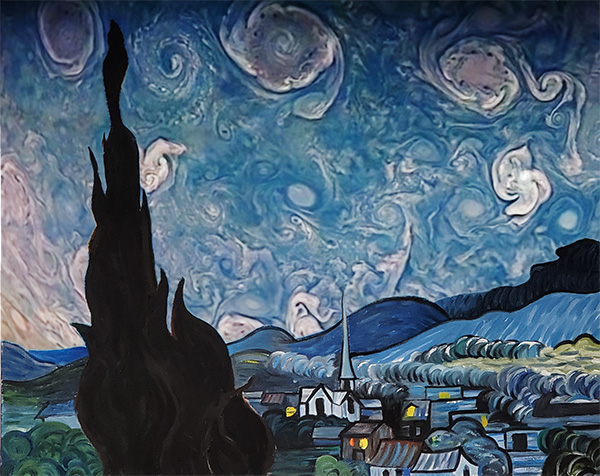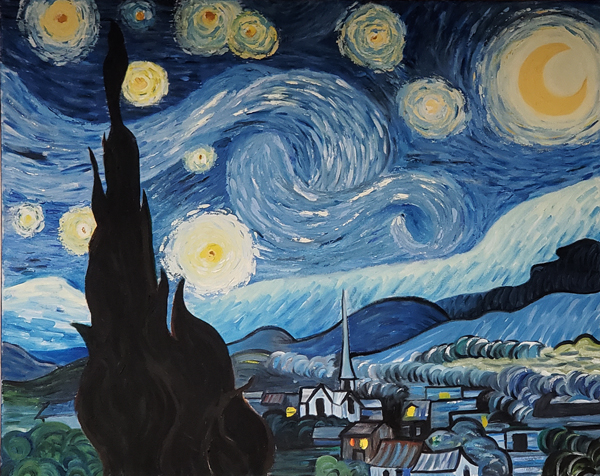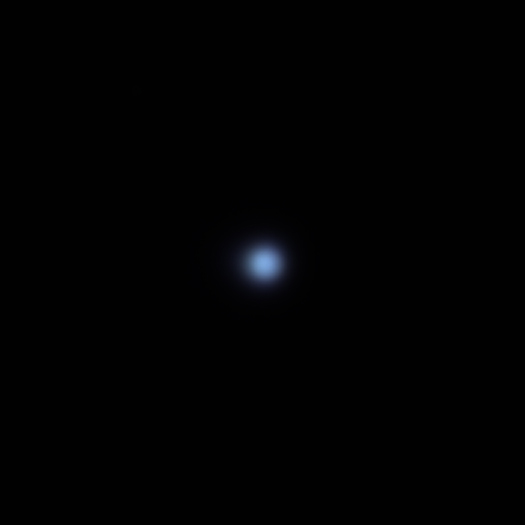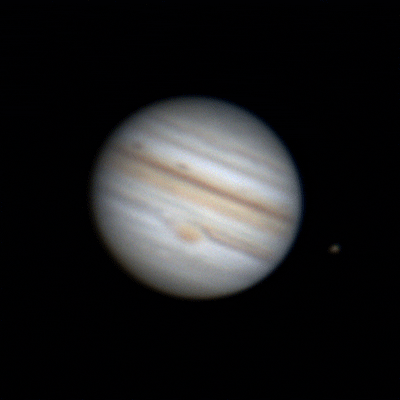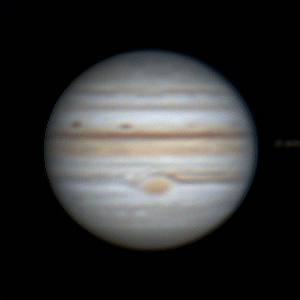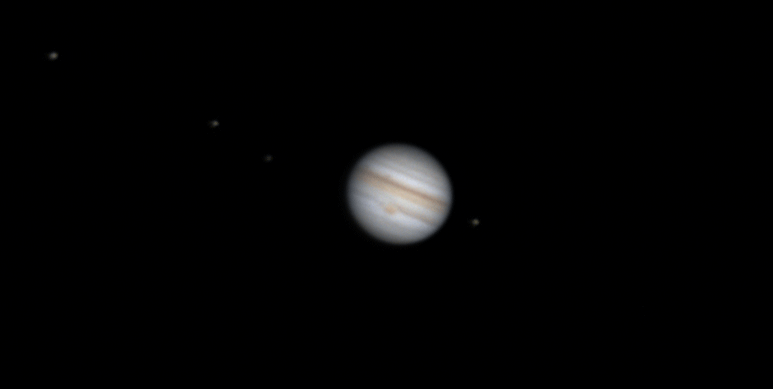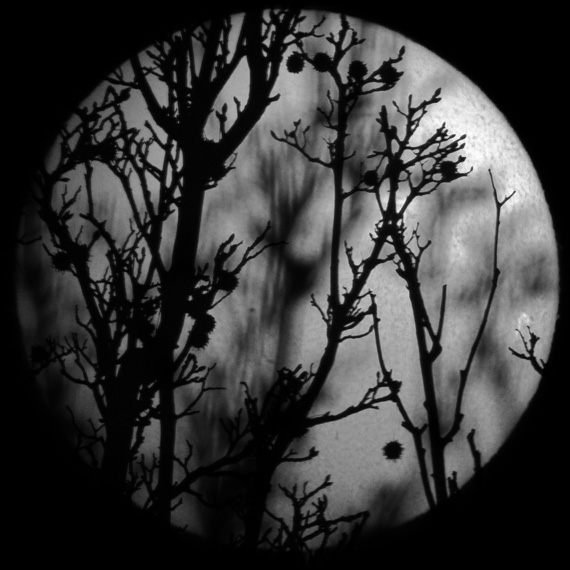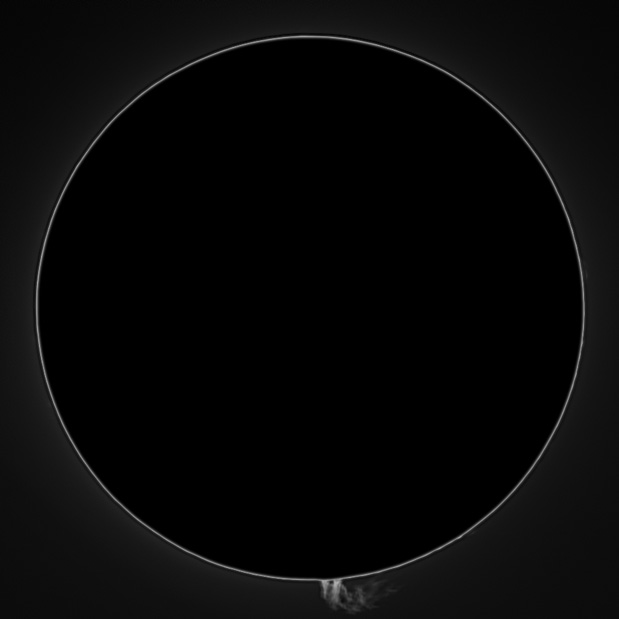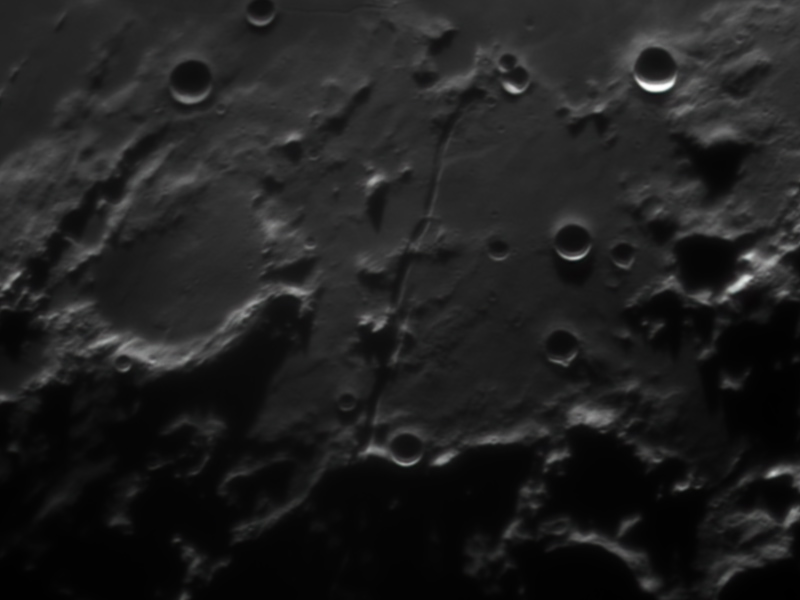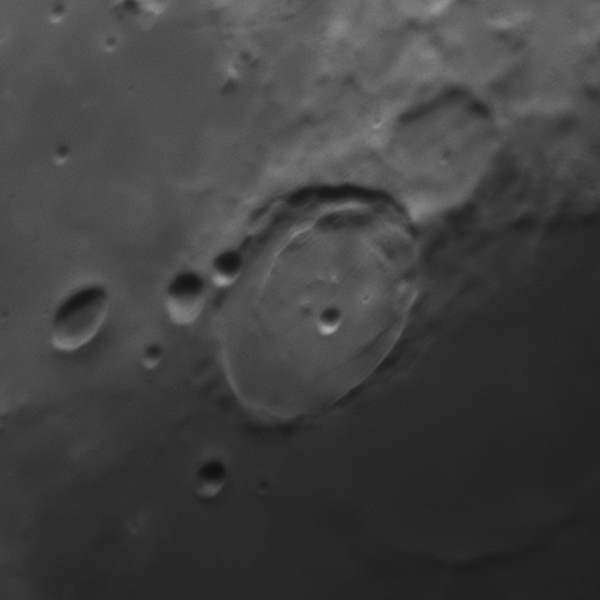a nice set of sunspots were on display the weekend of 4/23/22. Here's an animation comparing two views: a traditional "broad band" view showing the spots visible with neutral filter, and a view with a hydrogen alpha (Ha) filter showing ionized hydrogen plasma in dancing magnetic fields above the visual surface.
 |
| Sun WL vs Ha 2/23/22 22:07 UTC |
while i generally find the Ha view more interesting, it tends to mask the detail of the sunspots as well as the subtle "granules" on the surface of the sun.
the visual surface of the sun is called the photosphere, while the Ha/plasma layer is called the chromosphere as hydrogen plasma emits mostly red light.
Here's a composite Ha view combining a surface image with a much brighter image showing the prominences projecting off the disk edge:
 |
| Sun Ha Composite 2/23/22 |
Here's a small animation of one of the prominences over 4 minutes:
 |
| Prominence 4/23/22 22:43-22:47 UTC |
another of surface filaments between the sunspots no flares :(
 |
| Prominence 4/23/22 22:29-22:37 UTC |
next day i pulled out a big scope for higher resolution views of the spots, but the seeing wouldn't really support the magnification
 |
| Sun broad band 4/24/22 22:18 UTC |
a 2x barlow added no detail :( |
| Sun broad band 4/24/22 22:25 UTC |
Imaging details:
the "broad band" images were actually taken with a Lunt 60 Ha scope with the pressure tuner "off band". this is basically the equivalent of a red continuum filter which, to my eye, passes as "white light".
this conveniently allows "white light" and Ha images through the same imaging train with only a minor adjustment.
4/23/22
Ha Lunt 60 PT
sky-watcher star adventurer mount
full disk
zwo ASI 174MM
Ha disk
FPS (avg.)=172
Shutter=0.458ms
Gain=190 (47%)
Histogramm=75%
Ha prominences
FPS (avg.)=114
Shutter=4.575ms
Gain=190 (47%)
Histogramm=100%
Ha tuned off band
FPS (avg.)=121
Shutter=0.131ms
Gain=190 (47%)
Histogramm=72%
close up animations
ZWO ASI 290MM
disk face
FPS (avg.)=71
Shutter=0.468ms
Gain=190 (31%)
Histogramm=78%
prominence
FPS (avg.)=253
Shutter=3.946ms
Gain=190 (31%)
Histogramm=100%
4/24/22
white light images 2/24
celestron 11" Edge HD
ASA mount
ZWO ASI 290MM
"wider" close up
IR pass 685 filter (sharper than green due to poor seeing)
FPS (avg.)=21
Shutter=0.091ms
Gain=256 (42%)
close up with 2x powermate
ZWO green filter
FPS (avg.)=38
Shutter=1.847ms
Gain=256 (42%)
processing:
autostakkert
best 20 frames of 20 sec captures
registax, photoshop
East Bluff, CA
4/23-24/22












